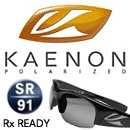
|
|
|
Scuttlebutt News: The 5O5 - Will this be the next sprit convert? The 5O5, so named for its length of 5.05 meters, achieved international status in 1955. The class is now preparing for its 2011 World Championship next week in Hamilton Island, Australia, but it won’t just be competition for the nearly 90 entrants. As 2009 World Champion Mike Martin details below, the class will be giving thought to a major change for its future:
With the 5O5 being a two man symmetric spinnaker boat with the crew on trapeze, the crew has their hands full with this very critical job of gybing. I think with this change, the boat becomes easier to sail, makes the boat less expensive, and easier to rig. And now that we have tested it with the sprit that Larry Tuttle built and the asymmetric spinnaker from Ethan Bixby, we have found that the boat sails great in this format. Some may contend that we will lose tactical ‘sit down sailing’, but we actually only sail deep downwind angles in a 3 knot zone (around 8 knots). If it’s light air, you’re sailing tight angles. If it is windy enough to be trapezing, you’re sailing tight angles. And I contend that the tighter angle sailing typical of asymmetrics is more tactical. You still need to call shifts but you also are choosing sides, whereas deep running you might be aiming close to the downwind mark the whole time. Additionally, the class has long been committed to using reaching legs in their championship course. The Worlds course is now windward, leeward, windward, triangle, windward, leeward. The reaching legs are a lot of fun, and while some people consider them less tactical, I have passed a lot of people over the years on the reaches. The primary system in the class for years had been a single pole on a trolley. But when the class approved carbon spinnaker poles a couple years ago, the weight savings allowed for a double trolley pole to be used. I was opposed to the move to carbon because we had a boat handling advantage with the single pole, but now the double pole has made gyping easier so that more teams are proficient. So the development of the system has helped equalize the fleet, but it also added a lot of complexity and cost to the boat. This is going to be an uphill battle, particularly with people who already have their boats perfectly set up. I just rigged the double pole system to make the gybing quicker, and it was a huge pain to rig and it was expensive, so with this change I would have to take all that work I just did and throw it out the window. So that’s the argument that I’m going to make, but I suspect for a lot of people we’re coming in from left field. We are going to discuss it this year at the Worlds at the class membership annual general meeting and see what kind of feedback we get. Here are comments from Andy Burdick of Melges Performance Sailboats, who was involved with the 28-foot E Scow class when they went through a similar conversion from pole to only a couple years ago: The class wanted to make the boats easier to sail downwind, but also make more tactical and faster. The process took awhile, and the biggest hurdle was for people just to try it. There were some early adopters, and even a few fleets that jumped in and said "we are doing it!" Then they traveled with their boats and allowed others to try. From that point on the momentum just carried through. And the new configuration is more tactical. With more speed and quicker and easier maneuvers, being in the wind is key, so it is not a “sail to the edge” approach. Big gains are made by being aggressive in your search for breeze and angles throughout the course. Here is a report from Ethan Bixby, North Sails Gulf Coast, on sailing the reconfigured 505 with a sprit and assymetrical spinnaker: We tested an Asymmetric spinnaker on a 5O5 at this year’s midwinters. Larry Tuttle and I have discussed this occasionally, and after many hours of fiddling with a dual pole system I decided to give it a try. We sail the boats like skiffs now, with the exception of windspeeds from about 5-10 knots where we sit run. Larry agreed to make up the carbon bowsprit and I would do the sail, so Larry and I worked with Steve Calder of North Sails’ Performance Resource Group to model up an appropriate sail. Our goal was to make a test platform that could be easily bolted onto any existing 505, and work with the existing launchers. So this test is with a fixed bowsprit that is 48” past the bow. It attaches with 4 bolts through the gunwale and a Spectra or Vectran bobstay that secures just above the waterline. The sail area is sized to be of similar surface area to our existing spinnaker, and perform in the 80-90 degree apparent wind angles. The midwinters have traditionally been a testing time – new teams, new sails, etc. Actually Ali Meller and Larry Tuttle raced one midwinters with the first American 6m luff spinnaker! We thought that including it in a fleet race would be the best way to evaluate the performance. We had all the components ready and bolted it on Thursday morning before the regatta and went for a sail in 8-13 knots of wind. Then we raced with it in windspeeds from the high of maybe 25 to a little bit of sit running conditions. Our racing time was limited by breaking a rudder one day and pulling the bobstay fitting out of the bow, but we were able to compete in all the races on Sunday. Simplicity is a key point here. We could remove the following items if it was a permanent installation: To use the kit we needed a longer spinnaker halyard due to the double dousing patch. We also got some longer spinnaker sheets but I am not positive that was necessary. We used a tack line and just lead it to the starboard pole launcher cleat. Also 4 ¼” bolts and nuts, and some scrap spectra for a bobstay. I drilled a hole through the bow to mount an eyestrap as a temporary fixture. This part did not go well and it was truly temporary in 20+ knots when the sprit wants to lift the bow! My impression is that it is really easy to use, and it is impossible to run over a spinnaker sheet! Jibing is very easy as the boatspeed seems stays up when the crew comes in off the wire, and you just turn the boat with no hesitation and the boom comes over with less load. The crew just eases into the jibe, and trims out the other side. Consequently, I felt more able to jibe any time needed, without worries of a swim test. Performance wise, it seemed the harder it blew the faster we were relative to the standard spinnakers. And the interesting thing was that the boat seemed to track better and was more stabile in the changing windspeeds. It just felt right and rock solid. In moderate conditions the performance was similar, and maybe just slightly faster. Effective angles were the same. As it got lighter it changes, but we were impressed at the range of angles you could sail at. In the very light air on Thursday we just eased the tack line up and soaked down well. You had to steer carefully. We did try wing and wing and that would be a tactical option too. With the nice separation of the sail plan provided by the long sprit, the sail seemed surprisingly effective in light air. I think the size of the sail we tested would match well with the courses we currently sail. If we were to go to 100% windward leeward courses you would certainly look at a larger sail. We opted to keep the halyard at the same height to avoid further rig issues. The permanent sprit takes a few minutes to get use to, but you quickly adapt to the change in length of the boat in crossing situations. Onshore, I would release the bobstay so we could center the boat on the dolly. The class could look at a retractable pole and I understand that it would not be hard to make retrofit kits. Ours could have been a little higher to clear more waves, but we punched it through a few and it didn’t seem an issue. I was chasing one wave downwind to see if I could put the sprit through it, but Erik discouraged me! See photos below  Current configuration - single or double pole on trolley and symmetric spinnaker  Current configuration - single or double pole on trolley and symmetric spinnaker  Proposed configuration - sprit pole and asymmetric spinnaker  Proposed configuration - sprit pole and asymmetric spinnaker  Proposed configuration - sprit pole and asymmetric spinnaker  Proposed configuration - sprit pole and asymmetric spinnaker  Proposed configuration - sprit pole and asymmetric spinnaker March 16, 2011 back to top |







|


